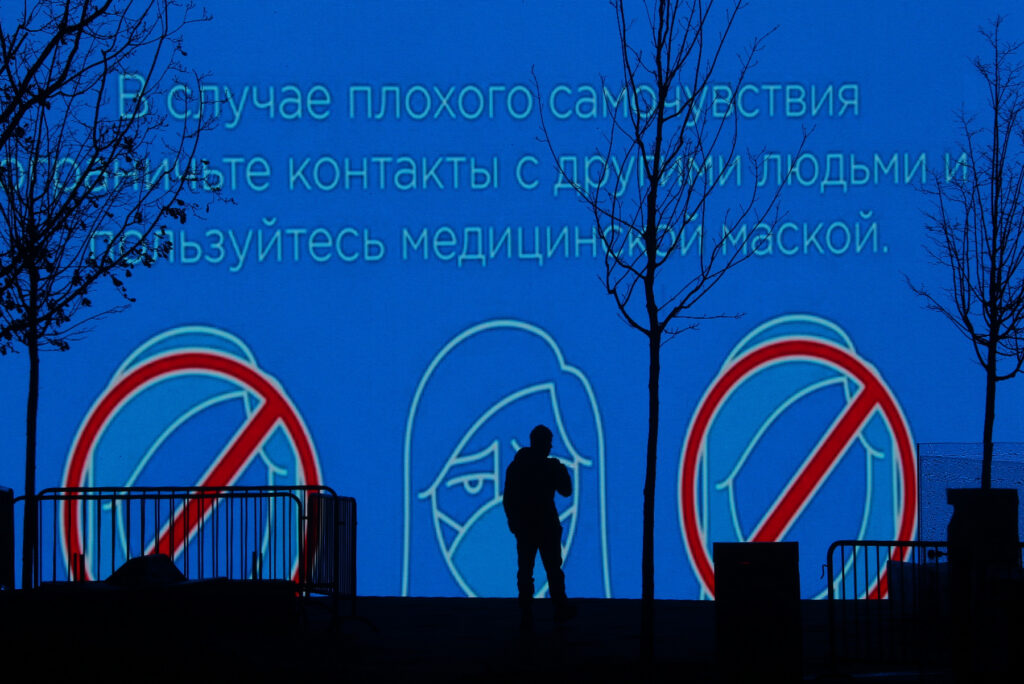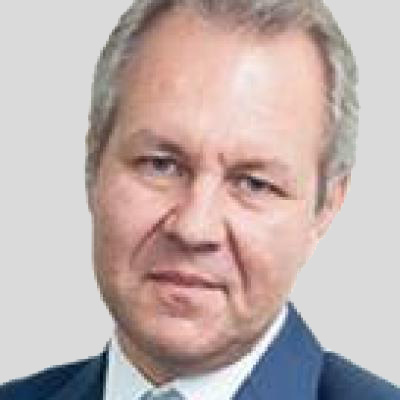Despite the good signs from Pfizer’s coronavirus vaccine trials boosting global markets in early November, the second wave of the pandemic is getting worse. The number of cases and deaths has set records several times since the start of the month. Russia here is no exception, despite differences with most other countries in nearly all aspects of its pandemic response.
First of all, the uniqueness of Russian “statistics” is striking. Russia fell from second place to fifth in the world in officially reported cases of COVID-19 from May to November. The figures provided by the authorities, however, should not be taken seriously. Firstly, in most EU countries and those post-Soviet states where statistics can be treated at least with a minimal confidence (Ukraine, Georgia, Armenia), the increase in the daily registered number of new cases surged by 5.8 to 50 times from September 1 to November peaks. In Russia – only by 4.6 times. Second, and this is even more noticeable, the daily deviations of this indicator averaged 20-60% in most countries. In Russia, they surprisingly did not exceed 10% over the past two months. The largest daily deviation recorded on 28 October, reached 9.35%. This probably indicates a “correction” of the data, since no epidemic can develop in such a predictable manner. Thirdly, the concern about the epidemic in recent months is significantly higher than in the spring. Most Russians have relatives or friends sick. The Internet is full of requests for treatment methods. There are shortages of many drugs in pharmacies across the country. This all speaks not only about the scale of the disease, but also about the incipient panic.
Fourth, we can note the spread of COVID-19 among Russian officials. About 30 State Duma deputies and 2 governors fell ill in the “first wave”. Now these numbers are already 117 and 20, respectively, which significantly exceeds the declared average indicators for the country. In any case, there is no doubt the problem looks more than serious. The official death rate of patients diagnosed with COVID-19 exceeds the death rate from COVID-19 by almost three times — 55.67 thousand versus 20.72 thousand people as of the end of September.
Another point of concern is the changed response to the spread of the pandemic in the Russian health care system. In spring, its efforts were more focused on identifying and treating infection. In March-April, it seemed the authorities were confident in the effectiveness of quarantine measures and the possibility of an early victory over the coronavirus. The growth curve of the incidence from the end of March to the beginning of May is much more akin to equivalent graphs in developed countries in the same period than over the last one and a half months. At the same time, the disease has obviously shifted to the regions. The share of Moscow in the total number of daily detected cases is now 26.4% versus 50.5% in mid-April. In rural Russia, the possibilities for its treatment are more limited. Today, the same messages come from all regions: even with obvious signs of illness, it is impossible to do a free test. Paid ones are not affordable for everyone, while private laboratories refuse to accept clients with symptoms. Phones in hospitals and ambulances do not answer for hours. Doctors’ arrival at home is delayed for several days; hospitalization is carried out, as a rule, at a fairly late stage of the disease; almost everywhere hospitals are overcrowded. There is simply nowhere to carry even seriously ill patients; attention to the most vulnerable categories of patients is minimal and borders on complete indifference.
An indicator to watch is the ratio of mortality and detected cases of infection. Today’s figures are almost identical to those of the “first wave.” For example, 63.8 thousand infections and 851 deaths were recorded in the week from 17 to 23 May. In the week from 1 to 7 November, it was 135.7 thousand and 2261. So the specific mortality increased slightly – by about 20%. In most Western countries, the situation has changed significantly — between mid-April and early November, the mortality rate to the number of new cases decreased on average by 6-7 times. In France it decreased almost 30 times. This observation indicates that the Russian health care system is catastrophically failing to cope with its tasks. Even the official figures published by the authorities indicate this. The hopes for the Kremlin’s promise of a vaccine are rather dim. None of its proposed vaccines have passed internationally recognized trials. Moreover, it is unclear how quickly the Russian industry is ready to replicate the required number of doses (even federal ministers have recently openly talked about the “difficulties” in this area).
The third difference between Russia and most EU countries (and to a much lesser extent the United States) is the willingness of the authorities to once again introduce restrictive measures. In the spring, Moscow “closed” the economy at the very beginning of the pandemic. That was when there were much fewer infected people than in Western countries. Now the authorities have no intention of doing something similar, although the situation looks more alarming. Classes in schools have not been canceled everywhere. Restrictions on catering and public events are much less significant now (only in recent days in Moscow entertainment events were canceled until January 15 and a ban on the operation of restaurants and entertainment centers at night). In most regions, the main prohibitions affected citizens aged 65 and over. Their activity is traditionally not very high anyway. The overall activity of Russians (including visits to shops and service enterprises) is today at a level commensurate with last year’s indicators. The same can be said, for example, about commuter transport – both intracity with a population of one million, and interregional. The economy, which many (including the author) predicted a decline of 9-10% by the end of the year, now feels far less dire – and this is exactly what is gained in return for extra infections and deaths. Paradoxically, the growing concern of Russians about health issues and fear of the prospect of becoming infected are combined in society with a high level of “covid dissidence.” That brings a disregard for elementary security measures and open “agitation” against any restrictions. At the same time, there is no consensus in the Russian leadership on further actions. If the spread of the epidemic does not slow down, a new quarantine is inevitable.
The fourth difference is the very limited economic “response” to the new COVID-19 offensive. The draft budget for 2021, recently submitted to the State Duma, as well as the government’s macro forecast, do not take into account the worsening epidemiological situation. Moreover, if this year the authorities took at least some measures to support the population and business (do not forget that the federal budget expenditures in January-September exceeded the indicators of the corresponding period of 2019 by 24.9%), then next year significant cuts in spending on many important items are planned (cuts in defense spending, for example, provoked vigorous criticism of the “statists” and became a reason to discuss the prospects for the resignation of the finance minister). If in the majority of Western countries massive financial injections, ranging from 9% of GDP in the UK and 12.5% of GDP in the US to 14-15% in the EU and a record 20% in Japan, in Russia, even the most optimistic estimates support does not go beyond 2.5% of GDP.
No matter how the “second wave” of the pandemic develops, in developed countries during this year, real incomes of the population grew noticeably. Current consumption decreased, so the economy has reserves for a relatively quick recovery. It should also not be forgotten that the rapid recovery in the stock market (on November 9, the Dow Jones broke a record 30,000 points, and the total capitalization of US companies at the beginning of this week was 173% of GDP) provides support to pension and investment funds. These, in turn, strengthen consumers’ readiness to keep spending at a high level. The Russian authorities are now driving themselves into a trap by trying to keep reserves at an “acceptable” level. At a certain stage, “opening the jar” may turn out to be useless. It is indicative that the optimism of Russian investors this week fell, according to IHS Markit’s calculations, to a record low in the entire 11-year history of observations.
The general impression of everything that is happening in Russia in the context of the new “onset” of coronavirus infection boils down to a feeling of loss of political leadership and strategic thinking. The authorities allow the processes to develop “on its own”, relying on the traditional Russian “maybe” and assuming that the epidemic will soon be defeated. The economy and public sentiment will return to the pre-crisis state. On a global scale, the situation is likely to develop in this vein. The Russian case, however, may turn out to be specific, at least because the “coronacrisis” is like the 2008-2009 crisis or erturbations in 2014-2016. It can become the beginning of a new “non-development”, which will further consolidate the country’s lagging behind the rest of the world and cause an even wider spread of apathy and pessimism in society. In new conditions, that will become more politically dangerous.










